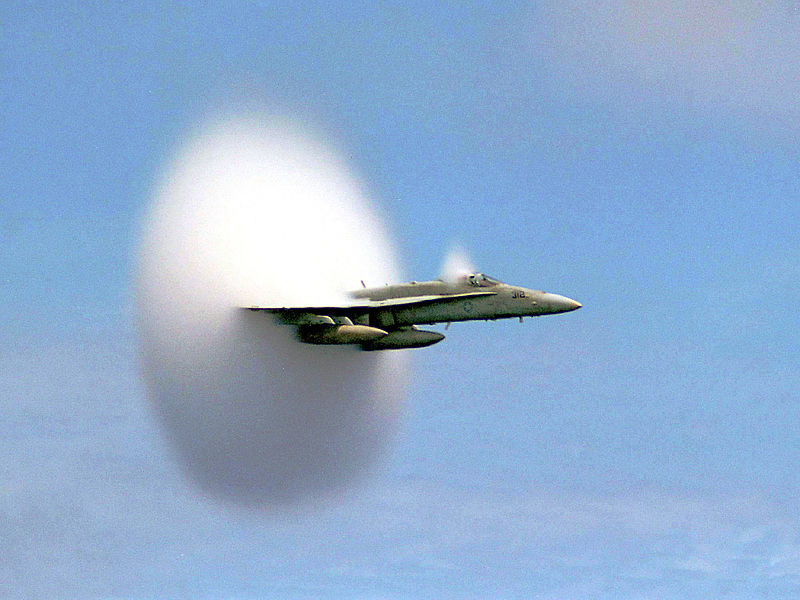The Beauty of Math - Sonic Booms

Have you ever wondered what a Sonic Boom really was? Consider this great explanation. Using this reasoning, what do you think a sonic boom looks like in water? Could we ever have a "photo boom," a sonic boom with light instead of sound?
For those with more advanced knowledge, how could you mathematically describe a sonic boom with a coordinate plane? What MACH creates the loudest sonic boom? What happens if the speed of the plane is variable? Feel free to respond with answers, hints, or ideas of where to go with these questions.
Image credit: NASA
No vote yet
1 vote
Easy Math Editor
This discussion board is a place to discuss our Daily Challenges and the math and science related to those challenges. Explanations are more than just a solution — they should explain the steps and thinking strategies that you used to obtain the solution. Comments should further the discussion of math and science.
When posting on Brilliant:
*italics*or_italics_**bold**or__bold__paragraph 1
paragraph 2
[example link](https://brilliant.org)> This is a quote# I indented these lines # 4 spaces, and now they show # up as a code block. print "hello world"\(...\)or\[...\]to ensure proper formatting.2 \times 32^{34}a_{i-1}\frac{2}{3}\sqrt{2}\sum_{i=1}^3\sin \theta\boxed{123}Comments
I would predict that around Mach 1 would create the loudest sonic boom. The sound produced from every moment in the plane's flight stays with it; therefore, as it passes over you, all of the sound produced at any time would hit you at the same time.
Log in to reply
That's what I was thinking; although I'm sure we could prove it mathematically.
Log in to reply
In addition, I am assuming that you are at the same height as the plane. If you were, for example, 1 kilometer under the plane, the speed for maximum loudness would noticeably change.
EDIT: I realized that not only would the speed for maximum loudness change, the range in which it has the same maximum loudness would also change. There would be a range of different speeds that would produce maximum loudness if you were 1 km under the plane. Correct me if I am wrong on this point.
A sonic boom with light is the Cerenkov effect, which is used all the time in particle detectors to see high energy particles hitting the detector. The "vacuum Cerenkov effect" which is the emission of light spontaneously in vacuum is one of the primary ways we use to accurately test special relativity.
Log in to reply
Fascinating!
In my opinion, it wouldn't be a photo boom, it would be a photo flash. Also, I agree with Daniel Liu about the Mach 1 creating the largest sound.